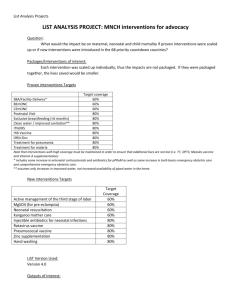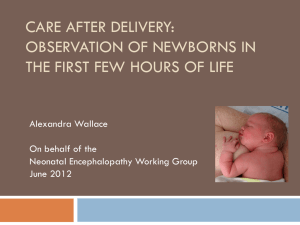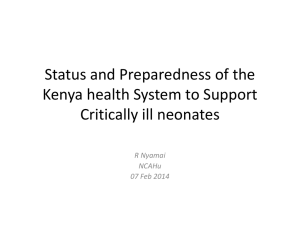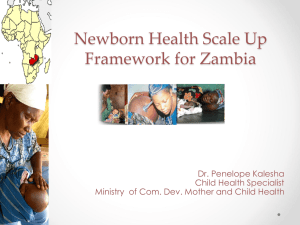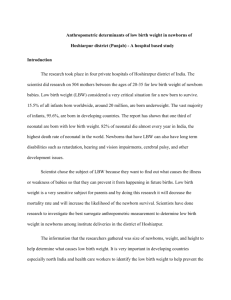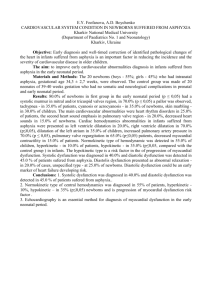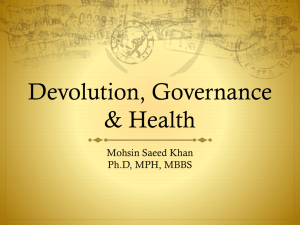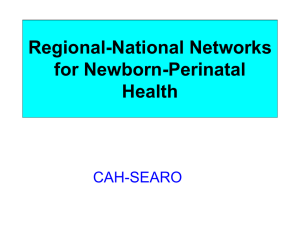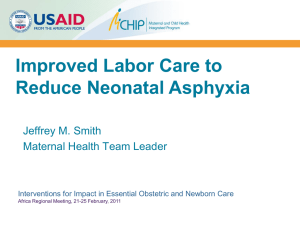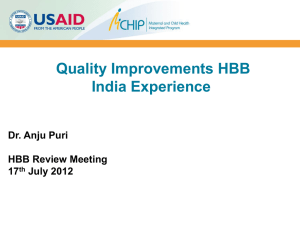nssk introductory - IAP NNF NRP
advertisement
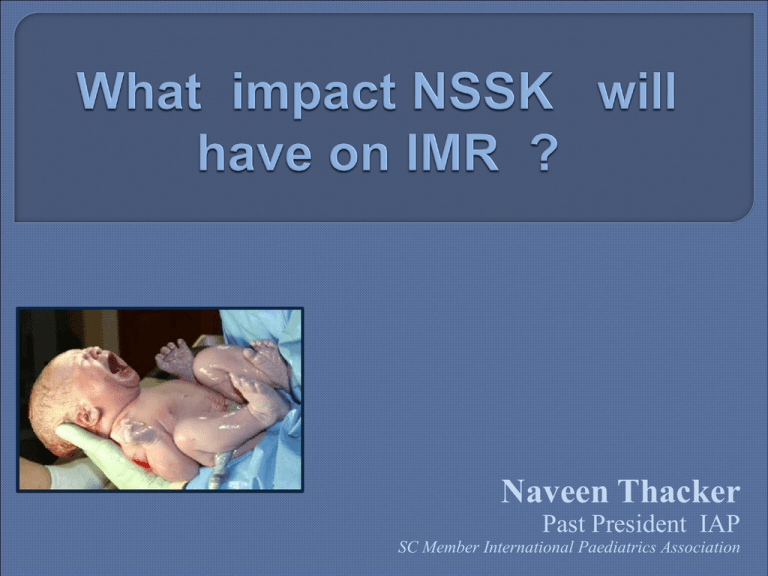
Naveen Thacker Past President IAP SC Member International Paediatrics Association India is epicenter of Childhood Mortality Worldwide distribution of child deaths Each dot represents 5000 deaths Lancet 2003 9.7 million < 5 yrs deaths annually world over India 2.1 million (21%) Every year…… … about 250,000 women die of pregnancy-related causes … about 1 million babies are stillborn of which at least 300,000 due to intra-partum causes … about 1 million neonates die Every year 1 million newborns in India die – where, when and why? What can be done to save these newborn lives now? Rank State Neonatal mortality rate (per 1,000 live births) 51.1 1 Chattishgarh 2 Jharkhand 48.6 3 Uttar Pradesh 47.6 4 Assam 45.5 5 Orissa 45.4 6 Madhya Pradesh 44.9 7 Rajasthan 43.9 8 Andhra Pradesh 40.3 9 Bihar 39.8 10 West Bengal 37.6 The first days of life are the riskiest • Up to 50% of all newborn deaths are on the first day of life - 500,000 babies in India dying on their birth day • 75% of newborn deaths are in the first week WHY do newborns in India die? The leading causes of neonatal death are: 1. Severe Infections (36%) 2. Pre-Term Births (25%) 3. Birth asphyxia (23%). 4. Other Neonatal Causes (6%) 5. Neonatal Tetanus (4%) Source: WHO World Health Statistics 2007 (India) What can be done to save these newborn lives now? Post natal interventions meeting criteria for efficacy for reducing all cause neonatal mortality/major risk factors Neonatal Resuscitation: 6-42% Breastfeeding : 55-87% Prevention and management of hypothermia: 18-42% Kangaroo Mother Care (low birth weight): incidence of infection 51% (7-75%) Community based pneumonia case management 27% (18-35%) Birth Asphyxia – Major cause of “Mortality” and “Stillbirth” Major cause of short and long term morbidity Substantially treatable Estimated Deaths due to Birth Asphyxia in India is 3 lacs/yr Till now focus is on live born infants only; stillbirths have largely been overlooked. these deaths matter too – they matter to the mother and the family, to the society and to the health care system. However, Estimated no. of still births in India are 1 million More than one third of stillbirths take place intrapartum, i.e. during delivery, and are largely preventable by the same interventions. In Dahanu, India, the stillbirth rate dropped from 18.6% to 9% with introduction of a TBA training program in neonatal resuscitation; Similar findings from Fatehpur, Belgaum India, 17 M Births Per Year Infant MR – 29.7/1000 LB Most Deaths Occur in First Day 20-30% Birth Asphyxia High Rate of Survivors with CP 199K/Yr Disabled 0-6, 11/1000 LB China Disabled Person’s Found 2003 Low 5 minute Apgar ( Birth Asphyxia) Decreased 60% Mortality in delivery room Decreased by 40% Courtesy: Keenan W J for providing the slide In rural Gadchiroli India interventions by the trained VHW in basic newborn resuscitation reduced case fatality in severe asphyxia by nearly 50% and asphyxia specific mortality rate by 65% in comparison to management by TBA alone* *Bang AT. Management of birth asphyxia in home deliveries in rural Gadchiroli: the effect of two types of birth attendants and of resuscitation with mouth-to-mouth, tube-mask or bagmask. J Perinat 2005; S82-91. Region Expected Changes References India 31% Ann Trop Peds China 66% Singapore MJ US 39-72% Pediatrics Africa 38% Expert Estimate Courtesy: Keenan W J for providing the slide Evaluation Of training- pre-test and post-test Knowledge by; Written Evaluation 93% 100% 90% 80% 70% 60% 50% 40% 30% 20% 10% 0% 83% 10% Pre Post % Change Evaluation Of training- pre-test and posttest Skills by Performance Evaluation 88% 90% 80% 70% 55% 60% 50% 33% 40% 30% 20% 10% 0% 1 2 3 Navjaat Shishu Suraksha Karyakram (NSSK) A new programme on Basic Newborn Care and Resuscitation, has been launched nationally by GoI to address important interventions of care at birth GOI and IAP have signed a MoU for training One trained person at Every Delivery A sustainable system of training , retraining, certification Follow up/ Monitoring of training Operational Research Study impact on mortality NSSK GOI Program ANM Navjaat Shishu Suraksha Karyakram Care at birth and newborn care Nurse CHC PHC Community SECTOR District Hospital Specialist Medical officer Services PRIVATE Provider FGM : NSSK for Pvt. Sector • Care of newborn at birth -Warmth -Resuscitation if needed -Initiation of breast feeding -Identifying LBW and high risk babies (prematurity) How many newborns could be saved? If the all essential interventions in “The Lancet Newborn Survival series” reached 90% of Indian women and babies then 36-67% of newborn deaths could be prevented Additional cost of $1.39 per capita per year Percent Institutional Delivery Delivery assisted by health personnel 41 49 42 34 35 26 NFHS-1 NFHS-2 NFHS-3 NFHS-1 NFHS-2 NFHS-3 If we train more than 90% health personnel attending institutional deliveries (41%) in essential interventions ,an estimated 15 – 30 % reduction in NMR can be expected There will be greater impact in states with higher neonatal mortality As government officials to lead As policymakers to guarantee essential interventions and equity As partners and donors to support programmes As health workers to provide high quality care and as humans to advocate for India’s newborns, mothers an children First Golden Minute Project Not only a project.. But …… a mission …. THANK YOU
